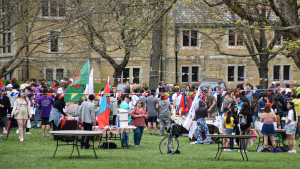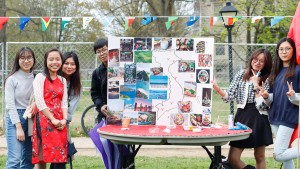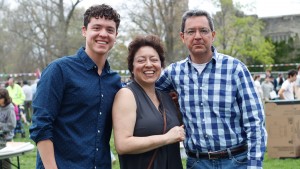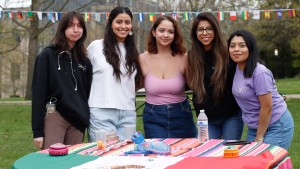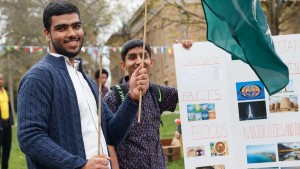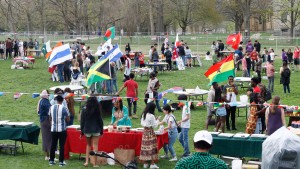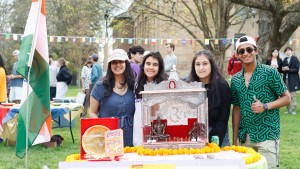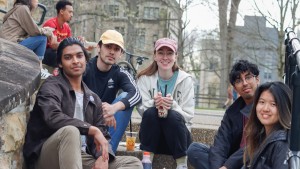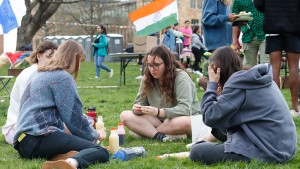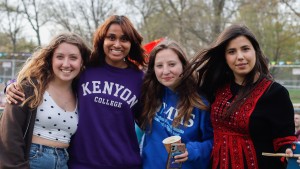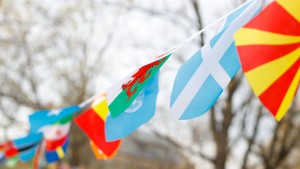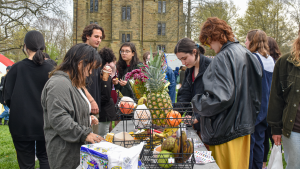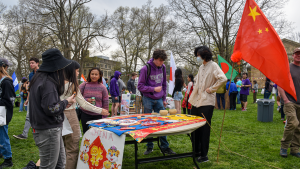The Saturday after Summer Sendoff, students gathered on Peirce lawn and began setting up tables in the rain. Umbrellas shielded poster boards and arrays of food brought in from Columbus. The Cultural Fair was beginning.
The origins of the fair, hosted by the International Society at Kenyon (ISAK), came about after the success of February’s Multicultural Night, an event where international students celebrated the cultural diversity of their home countries with a fashion show and catered food. Events like these are planned with the intention of giving international students the opportunity to share their cultural backgrounds with one another and the campus at large.
“It took about two months to plan the whole thing,” said Somphors Tann ’23, ISAK president and an economics and international studies major from Siem Reap, Cambodia. After writing proposals and receiving funding for the event from the Business and Finance Committee, the Center for Global Engagement and Kenyon’s anti-racism resources, as well as other departments like religious studies and the Office of Diversity, Equity and Inclusion, the event began to come together.
During the planning process, ISAK allocated financial resources to students representing each country — more than 30 of which were represented at the fair. The students could then decide how to spend the funds, whether on catered food, snacks from their home countries or other decorative props for their table.
